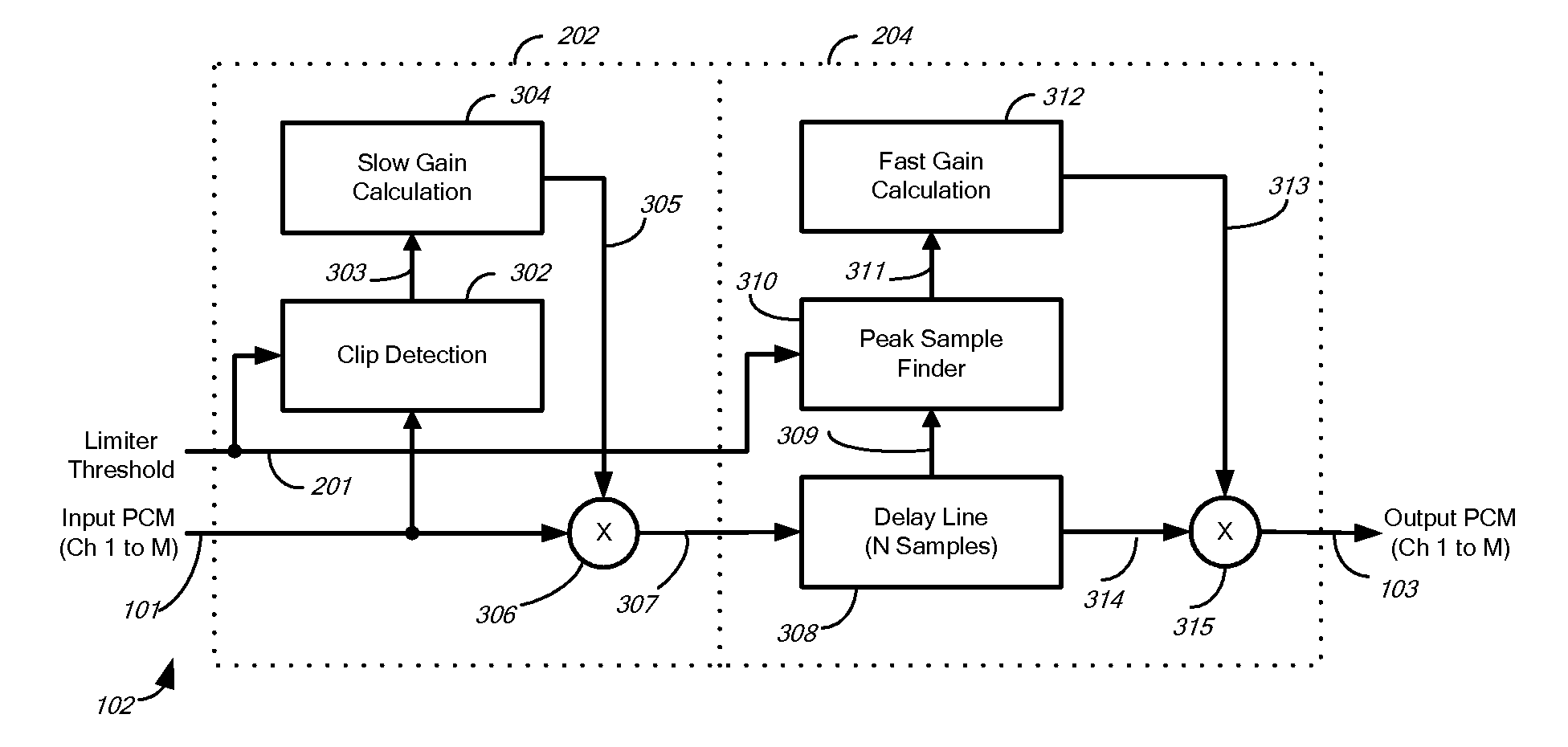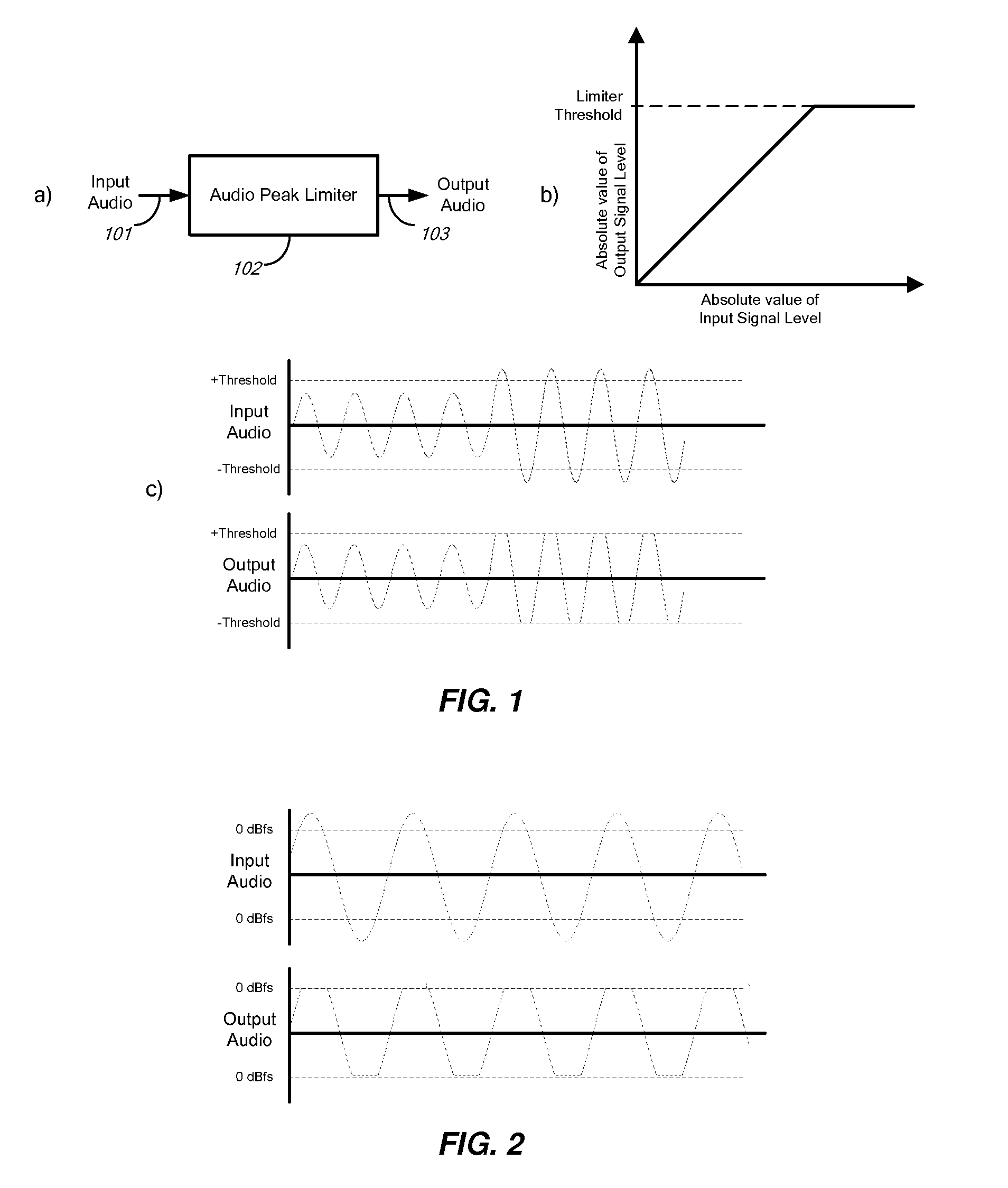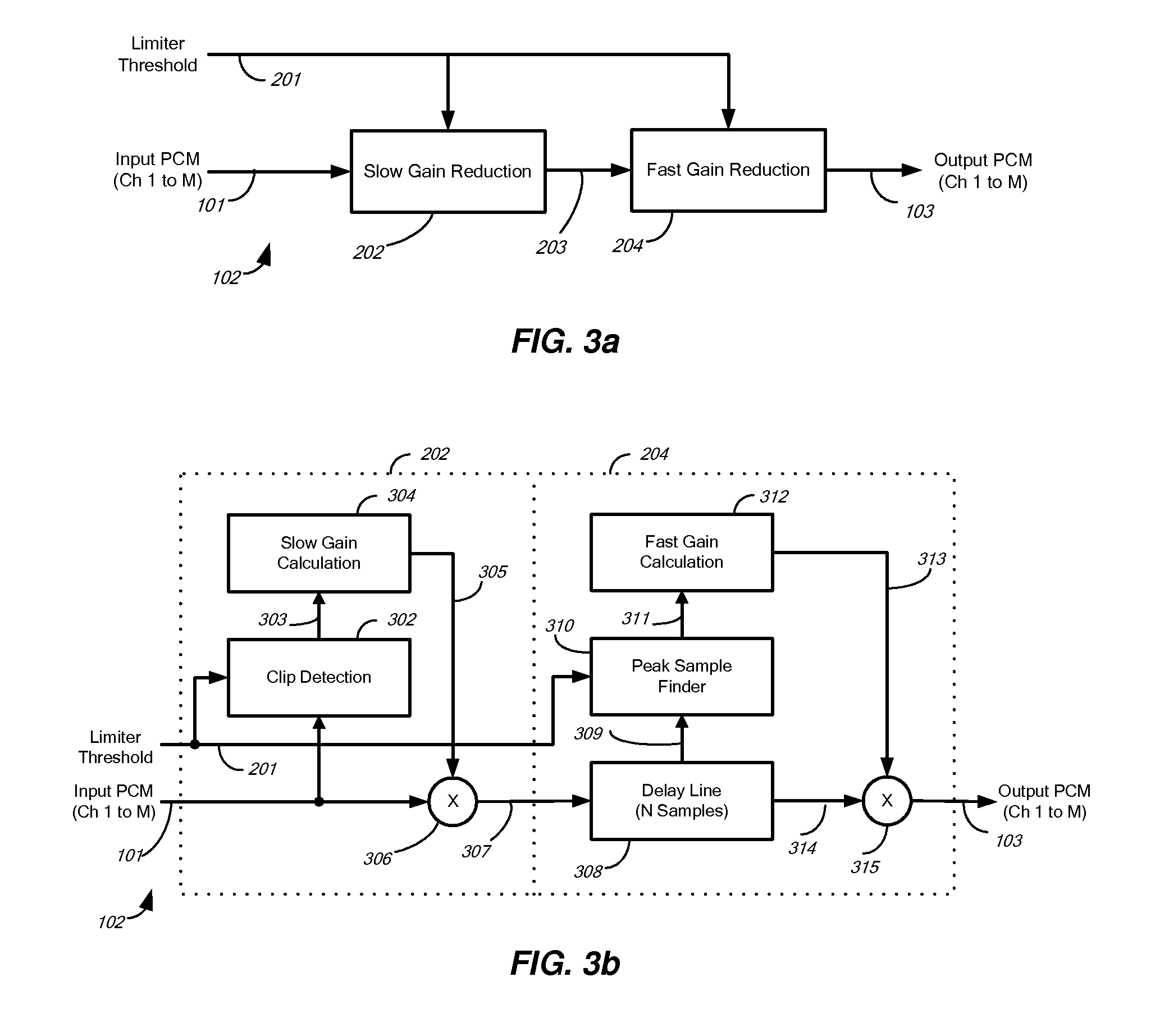Audio-peak limiting in slow and fast stages
a technology of audio peak limiting and slow and fast stages, applied in the field of audio digital signal processing and audio peak limiting, can solve the problems of significant alteration of spectral characteristics and perceived timbre of audio, and achieve the effect of reducing gain
- Summary
- Abstract
- Description
- Claims
- Application Information
AI Technical Summary
Benefits of technology
Problems solved by technology
Method used
Image
Examples
Embodiment Construction
[0052]FIG. 3a illustrates a two-stage audio peak limiter 102 according to one embodiment of the invention. The peak limiter 102 includes a slow gain reducer 202 and a fast gain reducer 204. The slow gain reducer 202 receives as input a threshold signal 201 and an audio signal 101 and produces as intermediate audio signal 203. The fast gain reducer 204 receives as input the intermediate audio signal 203 as well as the threshold signal 201 and produces as output the audio signal 103.
[0053]The peak limiter 102 operates as follows: The slow gain reducer 202 receives one or more audio channels by means of the input signal 101 and a signal representing the limiter threshold by means of the threshold signal 201. The absolute peak(s) of the audio channel(s) may exceed the limiter threshold.
[0054]The fast gain reducer 204 outputs signal 103, the possibly limited audio channel(s) of the input audio signal 101. The limiter 102 limits (gain reduces) any absolute peaks in the input audio signal ...
PUM
 Login to View More
Login to View More Abstract
Description
Claims
Application Information
 Login to View More
Login to View More - R&D
- Intellectual Property
- Life Sciences
- Materials
- Tech Scout
- Unparalleled Data Quality
- Higher Quality Content
- 60% Fewer Hallucinations
Browse by: Latest US Patents, China's latest patents, Technical Efficacy Thesaurus, Application Domain, Technology Topic, Popular Technical Reports.
© 2025 PatSnap. All rights reserved.Legal|Privacy policy|Modern Slavery Act Transparency Statement|Sitemap|About US| Contact US: help@patsnap.com



